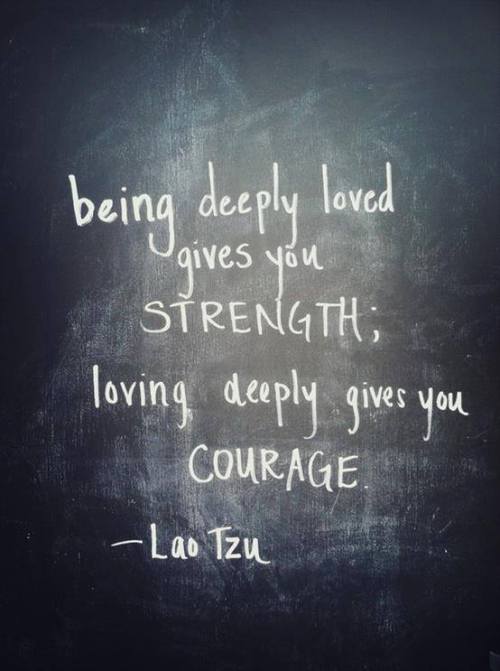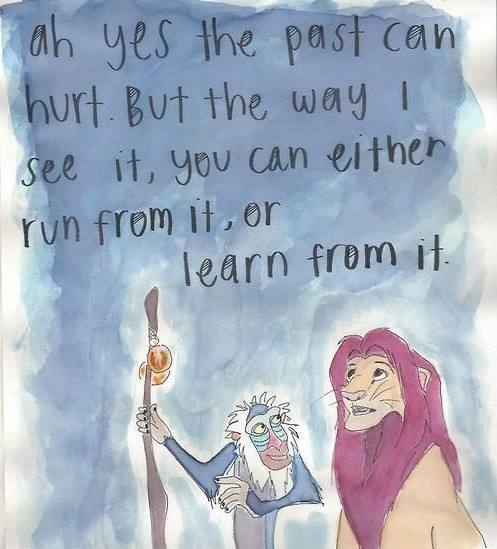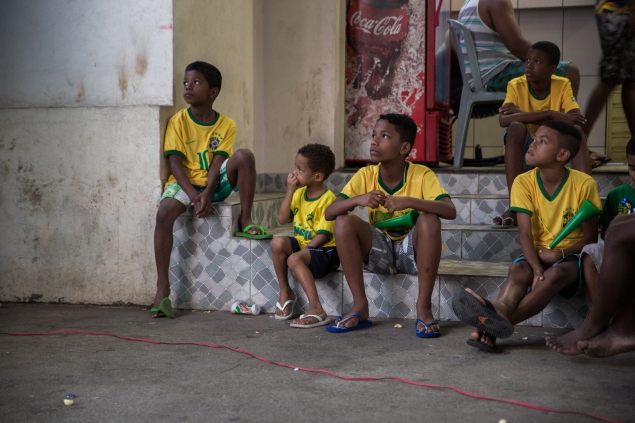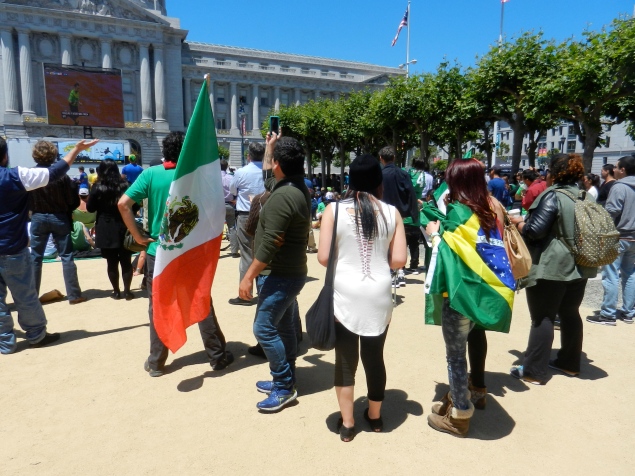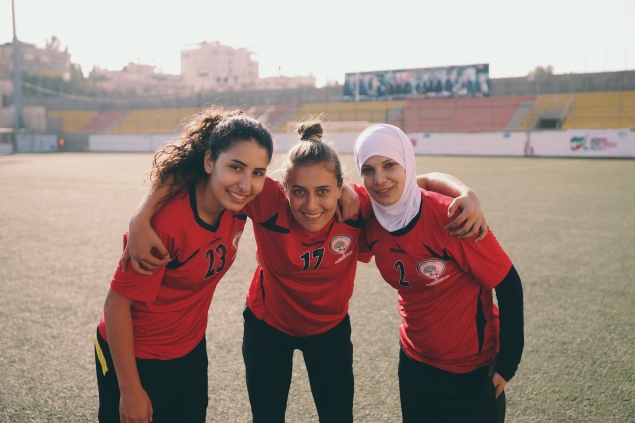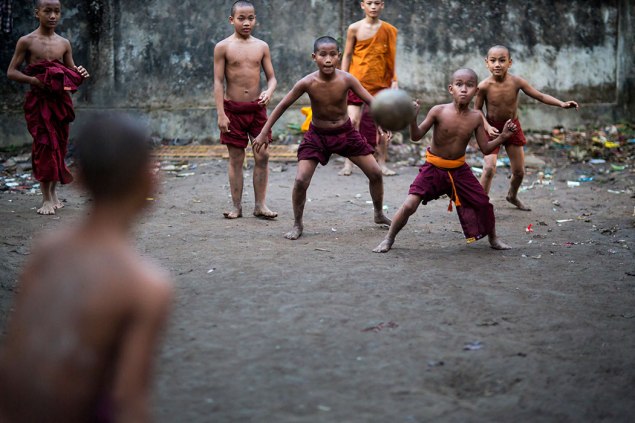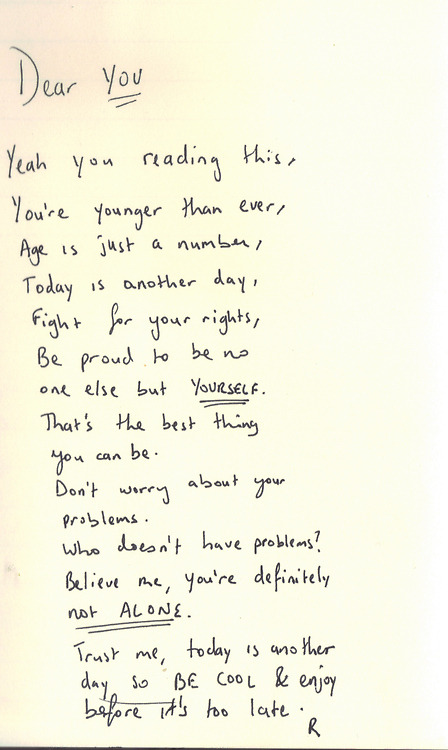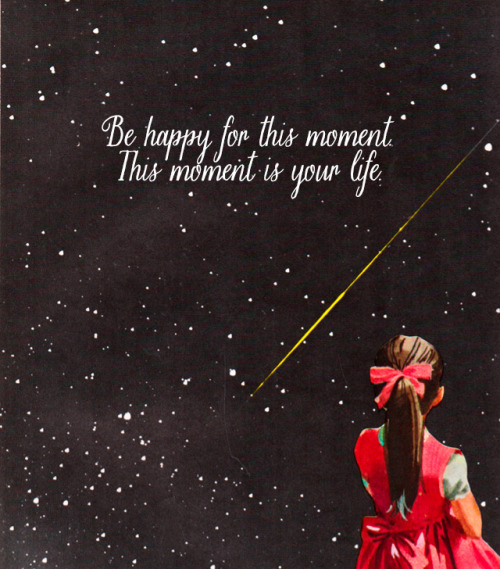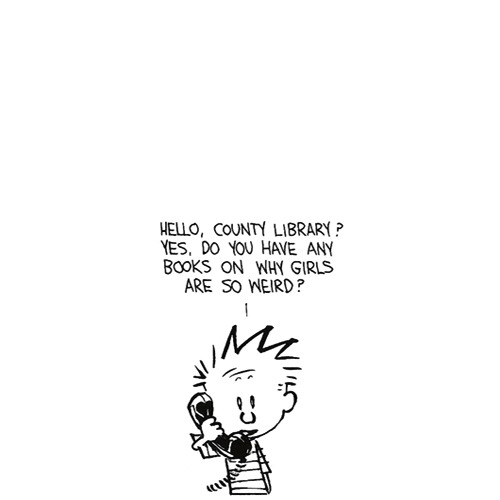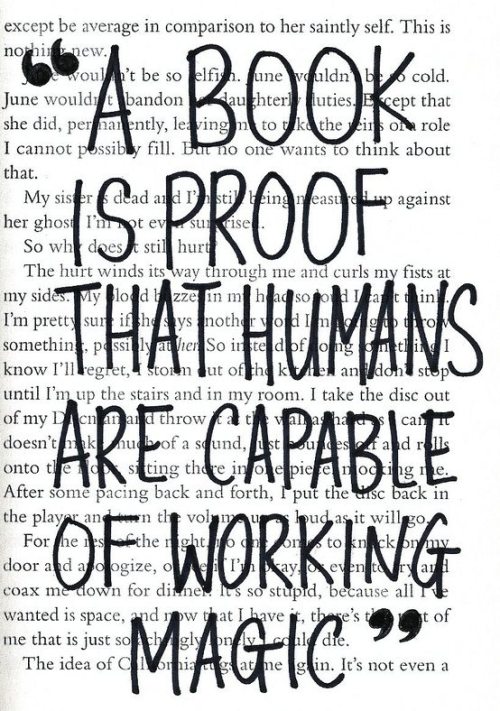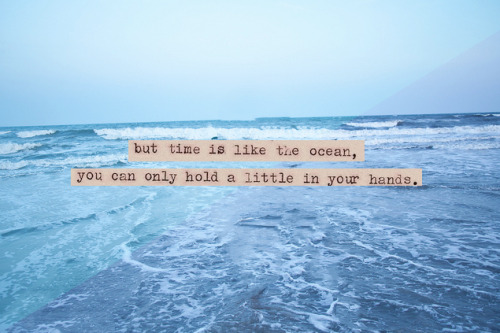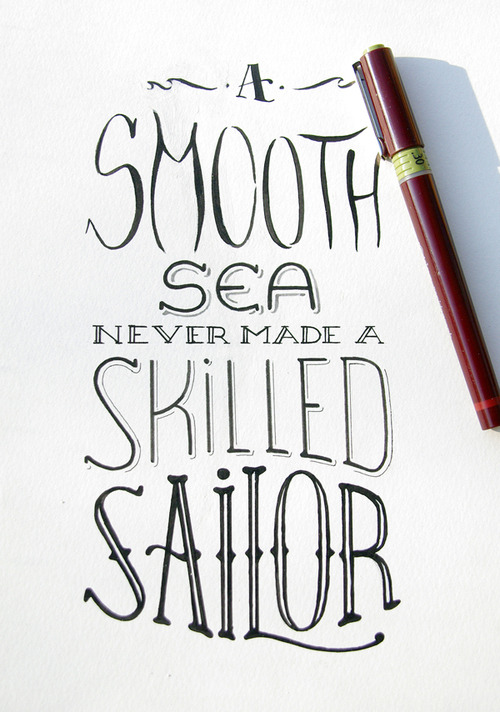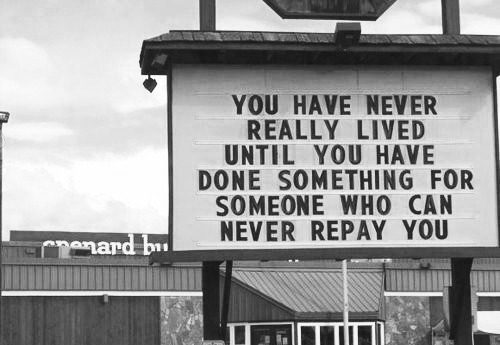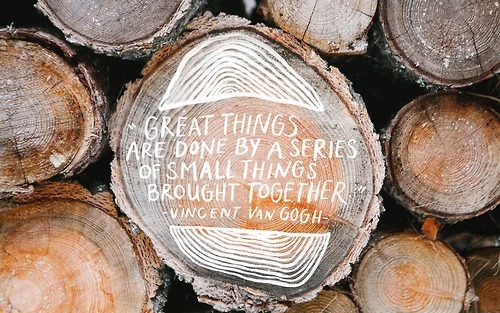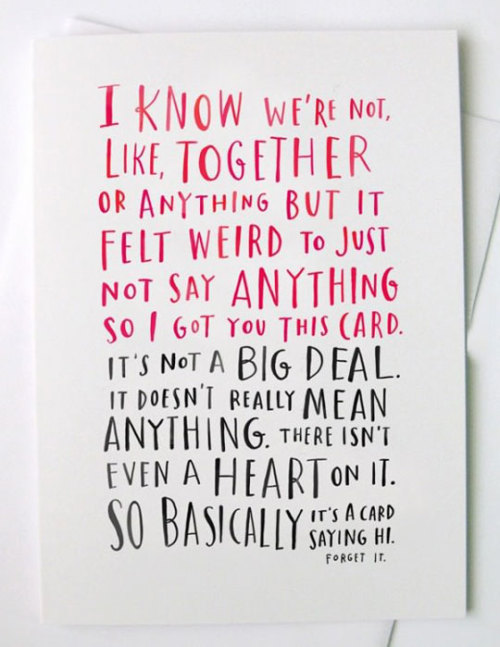On politicians..
Shared posts
Charlie Chaplin's Great Dictator speech, and the story around it
Video: https://www.youtube.com/watch?v=J7GY1Xg6X20&yt:cc=on
Text: http://www.charliechaplin.com/en/synopsis/articles/29-The-Great-Dictator-s-Speech
I found some interesting information around this here:
http://www.zerohedge.com/contributed/2013-10-24/greatest-most-relevant-speech-ever
... He chose to make The Great Dictator – a "satirical attack on fascism" and his "most overtly political film".
... Making a comedy about Hitler was seen as highly controversial, but Chaplin's financial independence allowed him to take the risk. "I was determined to go ahead," he later wrote, "for Hitler must be laughed at."
What's also interesting to read is that at the time, this amazing speech was taken rather negatively by many, and he suffered many consequences for it including later deportation from USA. He was hated for, as a comedian and an actor, having dared to so boldly express his political views and taken a stand on things. He didn't just act in this movie.. he spent two years writing the script himself.
This strikes a bell with what I see today happening when certain popular actors of our time have dared to put in considerable efforts and take a serious stand on things, like Amir Khan's call in 2014 to not vote for parties fielding criminal candidates, after a very detailed explanation for it in his SMJ episode. (See, I've already pissed some of you off by just mentioning his name! I'm sure even Chaplin must have been accused similarly back then. Come on, I dare you to watch that episode full : https://www.youtube.com/watch?v=zwRK4oL4O60 ).
Excerpts from Chaplin's speech:
"I'm sorry, but I don't want to be an emperor. That's not my business. I don't want to rule or conquer anyone. I should like to help everyone - if possible"
"More than machinery we need humanity. More than cleverness we need kindness and gentleness. Without these qualities, life will be violent and all will be lost...."
"Don't give yourselves to these unnatural men - machine men with machine minds and machine hearts! You are not machines! You are not cattle! You are men! You have the love of humanity in your hearts! You don't hate! Only the unloved hate - the unloved and the unnatural! Soldiers! Don't fight for slavery! Fight for liberty!"
"By the promise of these things, brutes have risen to power, but they lie. They do not fulfill their promise, they never will. Dictators free themselves but they enslave the people!"
“Ten years ago I was the subject of a documentary called ‘No...

“Ten years ago I was the subject of a documentary called ‘No Impact Man.’ It was about my attempt to live for an entire year with as little environmental impact as possible. My family rode bikes everywhere. We used no paper products. And the film got quite a lot of attention. I wasn’t used to the success. I’d written two history books before then. And they were good books, but they didn’t have much of a readership. Now all of the sudden I was being interviewed, and celebrated, and invited on Good Morning America. And then people started attacking me. Gawker wrote several articles calling me self-righteous, and an opportunist, and said I was imposing my values on my family. People said I didn’t care about the environment and only wanted to make money. And all the attention really caused a crisis for me. For the first time, I had a personhood that was completely different than my person. And that was exhausting. When someone called me a hero, I wanted to prove them right. When someone called me a devil, I wanted to prove them wrong. It took a lot of self-examination to realize that I was neither. There is a fullness to a person that is gigantic and nuanced and indefinable. It was equally impossible to be a hero or a devil. I couldn’t be contained by a single word.”
My Favorite Things
Happy autumn! It's the perfect season to carry a sketchbook.
As always, posters are available at my shop.
"I’ve had this calendar for three years. I use it for...
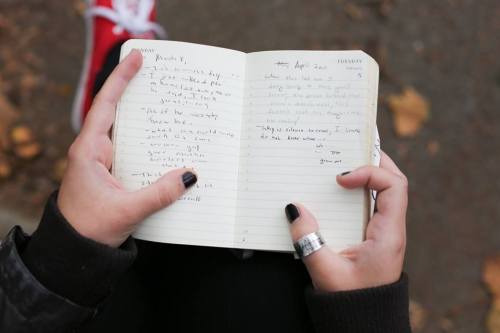
"I’ve had this calendar for three years. I use it for writing assignments and keeping my schedule, but also just to jot down my thoughts and do drawings."
"What’s…. (opens to random page) …. this page?"
"That was about a year and a half ago. It’s in two different colors, so I guess it’s from two different days. But it’s about the same boy."
“‘The person behind the name doesn’t exist’… what does that mean?”
"I wrote that one night when I was just sitting in front of my Gmail and Facebook, looking at the name of a boy I liked on the screen, seeing his profile, and somehow feeling like I was connected to him. The screen almost felt like I was connecting to a real person, but he wasn’t even there. It was just a name on a screen."
“‘Silence is cruel’… what does that mean?”
"It means I never got the courage to tell him about my feelings."
1 Week, 5 Animated Films That I Had Never Seen Before
-
Hercules (1997)
It's true! I had never seen it! On the podcast I'm famously known for having never seen Disney's Hercules all the way through before (watching it in high school AP English over the course of three days doesn't count), and the fact that I can't quote along with Morgan and Chelsea whenever they reference it is kind of a thing.
So there I was, watching Hercules all the way through at long last, thanks to Netflix. I loved the anti-heroine, Megara. The main character that stood out to me the most was James Wood's Hades (whom Andreas Deja did not animate? Huh.). Y'know I really think ol' Hades and Izma should hook up. They're kind of the same strain.
I was overall entertained but the sassy mini Gospel choir was confusing when juxtaposed next to the concept of Greek mythology. Maybe I'm taking the whole thing too seriously. I got a real Emperor's New Groove vibe out of the whole show, although Groove surpasses Hercules in its comedy and flow by far.
Actually, you know who really stole the show for me? This guy:

disneyscreencaps.com Stromboli aside, I had never seen a more delightful display of squetch (squash + stretch, try to keep up with me here) in my life. That guy was such a hilarious giant ball of fat that I had to rewind and re-watch his scenes again. Brilliant brilliant brilliant.
-
The Hunchback of Notre Dame (1996)
This one was also a notorious film in my life. I remember going to see it in theaters as a kid, but either the theater broke and we had to leave or Mom didn't like it and we ended up walking out.
I knew that Hunchback was one of Disney's darker animated features, but I wasn't expecting the opening-sequence murder, the attempted abortion of the film's hero, and a villain song centered around a priest's intense feelings of lust for a gypsy dancer. All of these revolve around Frollo, who takes the cake IMHO as Disney's darkest villain.
Phoebus, the seen-it-all-before soldier-turned liberator, deserves credit as a runaway hit character. I ended up liking Hunchback more than Jerkules because of the masterful animation, drama, and craftmanship of the film. I remember seeing this one layout drawing at Epcot and my jaw dropped. DaVinci - level skills.
-
The Secret of Kells (2009)
Cartoon Saloon? Never heard of it, although I could have sworn Genndy Tartakovsky had something to do with the animation. Turns out it didn't, although the overall style reminded me of Samurai Jack or something like Danny Phantom (not Tartakovsky but still).
This was beautiful European gem that really channelled the magic of Medieval illuminated manuscripts, from the colors to the tricks with perspective. Even though the story delved more into pagan tradition than the history-savvy side of me would have liked, the faerie Aisling stole my heart and even got me all teary-eyed during her song. Not sure why but I guess that's how pagan magic works. I guess the only historical problem I had was that the Book of Kells was actually the four Christian Gospels, and the film merely hinted on this important element.
Kells had brilliant character design (especially with the vikings) and gorgeous art design. Oh yeah, and the film has Hagrid. Bonus!
-
ParaNorman (2012)
I had regrettably missed this one too. From start to finish, ParaNorman had me giggling at the clever production design that effectively channelled the camp of old Romero zombie flicks. Even the zombies' musical cue was bleeding Romero. LAIKA's obvious passion for authenticity and perfection helped me get over its okay-ish typical teen scream/social-outcast-turned-unlikely-hero plot.
The plentiful allusions to retro horror were great, and Norman's final confrontation with a certain vengeful spirit was classic LAIKA in terms of creepyness and raw sense of danger. And I laughed out loud watching the jock Mitch (fittingly voiced by Casey Affleck) doing his thing in ever scene that he did his thing in.
-
Fantastic Mr. Fox (2009)Yes, yes yes. YES. Fantastic Mr. Fox was so good! It's LITERALLY a Wes Anderson film, complete with all the essential ingredients (awkward pauses, Bill Murray, and that's kind of it), in stop-motion form.
As if Roald Dahl's source material didn't already set this film up for hilarity, Wes Anderson's unique take on the art of film makes it an instant alt-crowd hit. First off, the dialogue was masterfully crafted with, I'm assuming, zero tolerance for cheesyness that plagues animated films featuring big-Hollywood voice talent. I don't know exactly what Anderson did (something about dragging the cast out in the forest and forcing them to do improv?), but every other studio needs to take note of what he accomplished. The hilariously refined lives of the film's critters, who exist somewhere between Disney's Robin Hood and The Busy World of Richard Scarry in terms of amount of clothes worn, make so much sense when you combine them with the recorded lines. George Clooney, as always, creates the charming protagonist while Bill Murray manages to really channel his inner Bill Murray as the Bill Murray-esque badger. Bill Murray.
The Americana style of the critters goes well with the too-British-for-Britain performance supplied by Michael Gambon as the film's antagonist. Willam Dafoe and Meryl Streep also did very well with their characters.
Notable scenes included Mr. Fox's weirdo son's awkward love/hate/mostly hate relationship with his cousin Kristofferson, the end encounter with the wolf, and any scene that has the rat. Also, this:
So far I’m really enjoying Andrew...

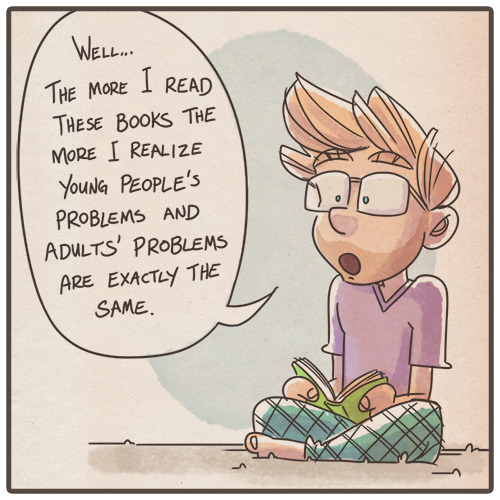
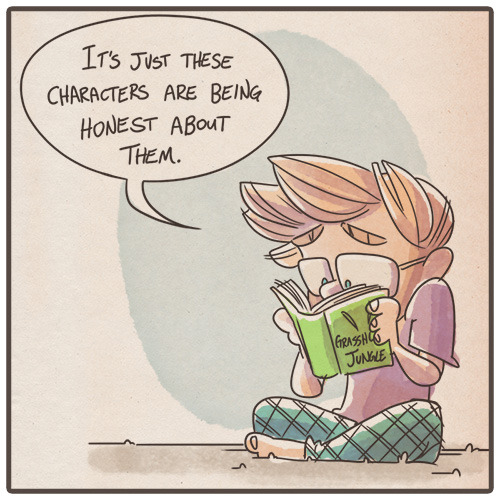
So far I’m really enjoying Andrew Smith’s Grasshopper Jungle…
YA 4EVA.
"Do you remember the happiest moment of your life?""One time...
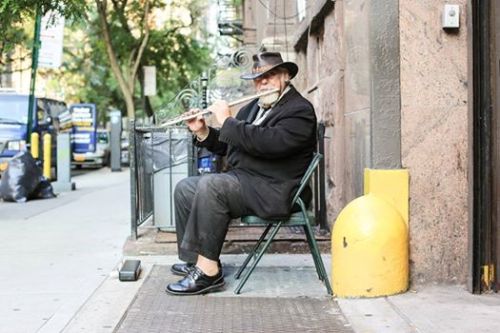
"Do you remember the happiest moment of your life?"
"One time back in 73’, I went to see a show at the Village Vanguard by Rahsaan Roland Kirk. He was amazing. He could play three saxophones at one time. I went to his last set of the night, and I got there early and found him sitting at the bar. I went up to him and asked if I could join him on stage for a song, but he told me that he wouldn’t have the time. ‘If you change your mind,’ I told him, ‘I’ll be sitting in the front row corner.’ I told him exactly where I’d be because he was blind. Then right at the end of the show, he started waving toward my table. I got up there and started playing, and at one point he motioned for the whole band to stop, and I got to play a solo up on the stage. Everyone was clapping for me. I rode home on the subway that night feeling like a king. Feeling like I could play with anyone in the world."
Around the World (Cup) in Eight Photos
Whether your country is playing in Brazil this year or not, joining in the fun of this monthlong global festivity is hard to resist. Thanks to bloggers and photographers on the ground in Brazil and around the world, we all get to have the best views.
Just before their team dispatched the outgoing champion, Spain, these Chilean fans found time to hit the beach in Copacabana, where they were captured by Rio-based photoblogger Cristina.
Across town, in a favela called Acari, Dutch student Steef Fleur watched the Brazil-Mexico match with some new friends. This photo is part of Steef’s ongoing project to document the World Cup across local communities in Brazil.
Fans on the other side of the equator watched the same game between the Mexican and Brazilian teams. Blogger Vonn Scott Bair joined the action in San Francisco’s Civic Center, where football fanatics and lunch breakers alike can watch the games together.
Of course, not only humans enjoy a good game of soccer; Zeke, David Kanigan‘s four-legged friend, was just as ready for the fun to start on June 12, when the first match took place.
All this excitement invites intensive, nonstop coverage. British photographer Simon Stacpoole is flying around Brazil this month, trying to capture the perfect shot of players in action. In this photo, taken in Manaus’ Arena Amazonia, he turns his attention to his fellow photographers in the moments before the England-Italy match.
The popularity of soccer has long transformed it into much more than a mere sport — it’s a global cultural, political, and economic phenomenon. The bloggers at Amsterdam Cycle Chic are documenting Orange Fever in Amsterdam, for example — here showing proud fans sporting their team’s jersey after their successful opening game against Spain.
As the lead photographer of the 2014 FIFA World Cup Trophy Tour, Joel Robison has witnessed the power of the game to make a change in communities worldwide. He’s visited more than 80 countries in the run-up to the World Cup, taking photographs of players along the way — like these young members of the Palestinian Football Association.
Photographer Tony Burns is currently in Brazil documenting scenes in and around the games, but few shots channel the game’s beauty and visceral appeal as the ones in this photo essay from January, showing how it’s played in a Buddhist monastery in Myanmar.
Are you currently in Brazil or viewing the games from home? Share your World Cup stories with us!
Filed under: Community, Wrapup
25 years ago June 4th, Tiananmen Square
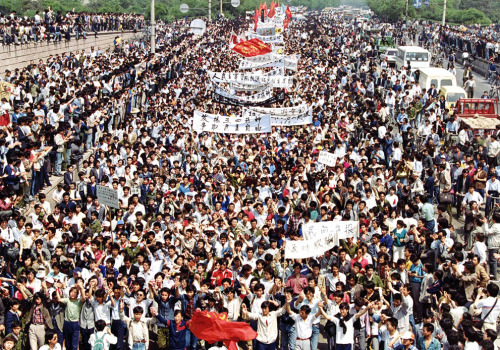
theatlantic.com, AP Photo
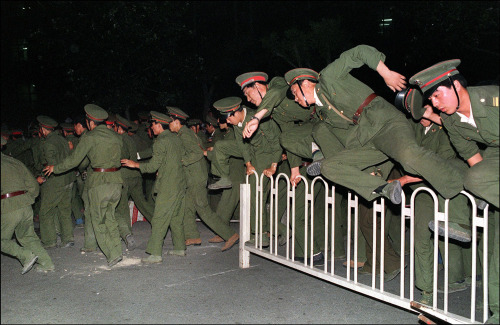
newyorker.com
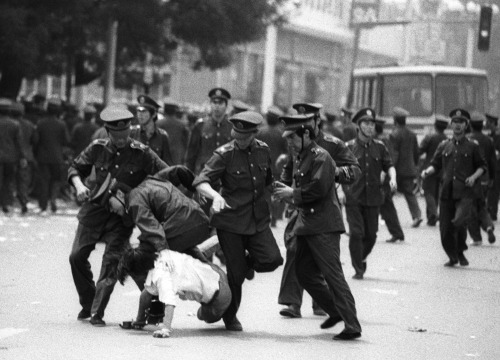
newyorker.com
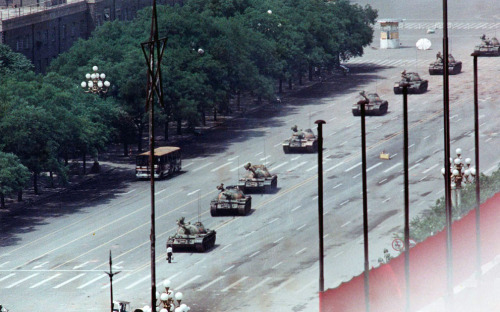
theatlantic.com, AP Photo
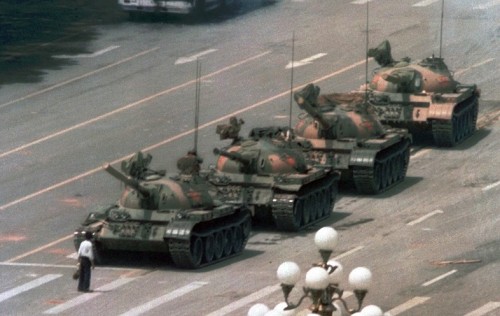
Stuart Franklin, proof.nationalgeographic.com
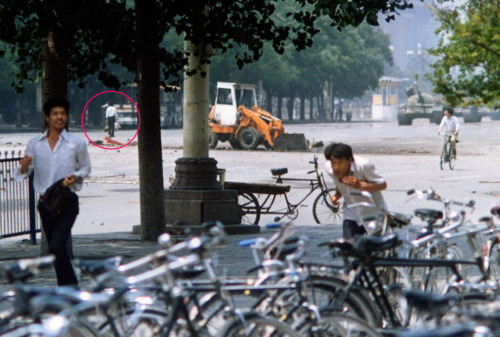
AP Photo
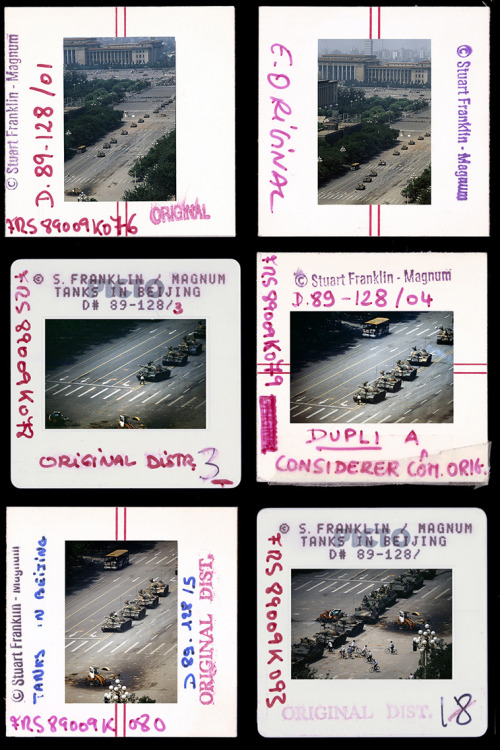
Stuart Franklin

theatlantic.com, AP Photo
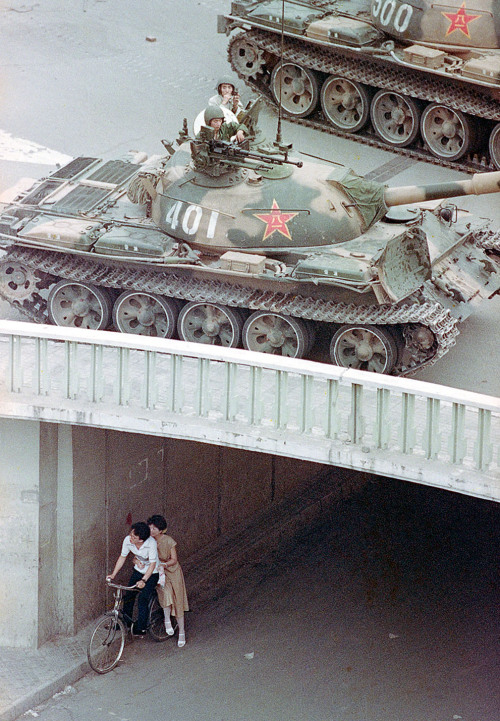
theatlantic.com, ap photo
25 years ago June 4th, Tiananmen Square
The Shadow
With increasing communal hostilities in the Indian society, this article tries to explain the drivers and the related consequences.
The Solemn Promise
This year the world marked the twentieth anniversary of the Rwandan Genocide. Addressing a ceremony to mark the occasion, United Nations Chief Ban Ki Moon said that the world would never again allow genocide to tear apart a nation. Describing it as one of the darkest chapters in human history he acknowledged that the world could have done much more to save the lives of nearly 800,000 Tutsis and politically moderate Hutus who were mass slaughtered by the extremist Hutu majority.
Academics who have carefully studied the anatomy of genocide have concluded that genocide is a process which develops in multiple stages and can be prevented if early signs are detected and preventative measures applied. The international community has made a solemn promise that it will “never again” allow genocide like Rwanda. The international community must remain vigilant.
Early Signs
While each ethnic conflict is different to the other there are common conditions necessary for an ethnic conflict to occur. In his book ‘Modern Hatreds: The Symbolic Politics of Ethnic War’, Stuart J. Kaufman has described three necessary conditions of ethnic war; Myths justifying ethnic hostility, fear and opportunity. According to Kaufman, myths and their incorporation in every sphere of Hutu society laid the seeds of hate against Tutsi minority. These myths led to collective fear psychosis which eventually led to the Rwandan genocide.
In this article I will explain how these necessary conditions of ethnic war are being met in India and what can be done to avoid a potential conflict.
Structural communal prejudice fuelled by myths
Just like Pre-Genocide Rwanda, communal prejudice against religious minorities has now become a structural feature of Indian society. This state sponsored and institutionalized prejudice helps the elites to fulfil their political aims and gives a sense of collective identity to the masses. The origin of this prejudice lies in the myths which have been carefully nurtured by the majoritarian forces in India over decades. Myths fuel prejudice and prejudice gives rise to new myths.
The myth of origin and ancestry
The majoritarian forces in India believe that Indian Christians and Muslims do not naturally belong to India in spite of centuries of common history and co-existence. Rwandan Hutus who formed 85% of the population believed that the minority Tutsis were foreigners who had no right to be in Rwanda even after centuries of co-existence.
“The artificial attempt to create a homogeneous society unfolds as a consequence of the acceptance of genocidal intent” ~ Jason J Campbell
The myth of the sacred homeland
The majoritarian forces in India believe in the sacredness of homeland. Any citizen who doesn’t attach divinity to the homeland is considered as the “enemy within”. A Muslim refusing to sing songs that attribute divinity to the homeland is portrayed as a traitor who would betray the nation for the sake of religion. In Pre Genocide Rwanda there were many Hutus in the Government and in the general population who strongly believed that Tutsi minority was the “enemy within”.
The myth of the golden age
Majoritarian forces in India believe that ancient Indian civilization was a world leader in cultural and scientific advancements and this golden age came to an end when barbarians from the west invaded India and forcefully converted Hindus to Islam. For a thousand years they say they were enslaved and now the time to reclaim lost glory has arrived. They hold the present day Indian Muslims responsible for the events of medieval era.
The myth of suffering
This is the most potent of all myths. The idea that the majority is suffering due a small minority evokes powerful emotional response. Since Rwandan independence in 1962 the Tutsi minority was made the scapegoat for every crisis that was faced by the country. In India the Hindutva forces claim that Muslim minority is appeased at the expense of Hindus because 13% Muslims decide the winner in India’s elections. They see this as continuance of centuries of subjugation by the foreign forces. This suffering can only end when a Government representing Hindu interests takes over and the minority Muslims are shown their place.
Social and political exclusion
Helen Fein is a historical sociologist who has written extensively on genocide and collective violence. She says:
“One condition that may predict genocide in the making is the practice of denying groups access to political and/or economic positions. In Germany prior to Nazi rule, the Jews were only marginally integrated politically. Economically Jews were overrepresented in the professions, but traditionally had been excluded from the guilds and civil service. The anti-Semitism that denied Jews access to political office, education and the professions eroded slowly during the 19thcentury, only to remerge at the end of the century; Prior discrimination and prejudice made the Jews a convenient target for Nazi ideologues”.
A survey conducted by the Government of India found that the presence of Muslims in top government jobs was minuscule, 3% in the Indian Administrative Service, 4% in the Indian Police Service and 1.8% in the Indian Foreign Service.
Even in the private sector there is an active effort to push Muslims towards causal labour jobs. In 2004-05 around 41% Muslims in Gujarat were involved in service sector which came down to 31.7% in 2009-10. In 2004-05, 59% Muslims were self-employed which came down to 53% while in case of salaried services the proportion of Muslims come down from 17.5% to 14% during the same period. It is also to be noted that Muslim share in causal labour increased from 23% to 32% during the same period (Source: CounterCurrengs.org)
The situation has become so bad that many Indian Muslims have to pretend to be Hindus to find employment. Housing discrimination has also become common. A Muslim is not allowed to buy or rent a property in a Hindu majority area. In a rare case a Muslim family was allowed to live with Hindus only when they agreed to change their names and get their house “cleansed” through a Hindu religious ritual.
In recently held Assembly elections only 8 Muslim candidates were elected from the 589 seats that went for election. That is less than 2% representation. Major political parties avoid Muslim candidates because they know that people won’t vote for a Muslim.
Development as legitimization
The fundamental assumption of the Development ideology is that the state’s sole objective is the pursuit of economic development. The Habyarimana regime masterfully played the Development card in Rwanda. He even changed the name of his party to National Republican Movement for Democracy and Development. While the Habyarimana regime kept selling the myth of Development, the pogroms against minority Tutsis continued. Those involved in the pogroms were never brought to justice. Today in India this model is popularly known as the Gujarat Model.
Mass media as tool of mobilization
In Africa of the1990s, radio was the most popular form of mass communication. A radio station named ‘Television Libre des Mille Collines’ (RTLM) was setup to broadcast hate messages against the Tutsi minority. Many observers now hold the opinion that this Radio station played a vital role in the Rwandan genocide. Ironically the stated aim of this radio station was to “to create harmonious development in Rwandese society”. This radio station was funded by wealthy Hutu businessmen, Hutu extremists and some members of the Government. Today in India the role of RTLM is being fulfilled by social media. Secular Hindus and minorities face a barrage of abuse and threats from Hindutva extremists. Journalists are threatened with rape. Mass murder is celebrated. During pogroms hateful messages and rumors are propagated. This is what a senior journalist affiliated with the Hindutva ideology tweeted during communal violence in Assam.
Rewarding Pogroms
Anti-Tutsi pogroms in Rwanda started years before the genocide. Every pogrom was explained as a spontaneous and uncontrollable reaction. After every Anti-Tutsi pogrom the perpetrators went back to live their normal lives. There was no accountability. This led Hutu extremists to expect that they can keep killing large number of Tutsis without any consequence. Today in India mass violence against minorities is not only being ignored but it is being rewarded by major political parties. The Indian police force has often been accused of being biased against minorities. The courts have failed to bring the perpetrators of violence to justice. This has created a culture of impunity.
Role of mainstream media
The international community failed to understand that Rwandan conflict because journalists in their attempt to appear “balanced” presented it as an equal racial conflict between Hutus and Tutsis. In reality the Tutsi minority was facing massacre after massacre. Similarly the Indian mainstream media in its attempt to appear “balanced” presents the communal conflict of India as an equal conflict. Hundreds of Muslims were killed and thousands displaced during the Muzafarnagar violence yet in its attempt to appear balanced the media condemns one extreme statement from Amit Shah along side one extreme statement from Azam Khan creating a false equivalence.
Resolution
According to Kaufman ethnic war can be prevented by changing hostile myths. The Government has to take proactive measures to recast nationalist myths. The extremists should be given a clear message that they will face the full force of the law if they indulge in distribution of hateful propaganda or violence. This is unlikely to happen if the far right extremists come to power in India. In such conditions the international community must closely observe the situation in India. The world simply cannot afford to sit idle as a genocide unfolds.
"There’s a principle in game theory known as min-maxing,...
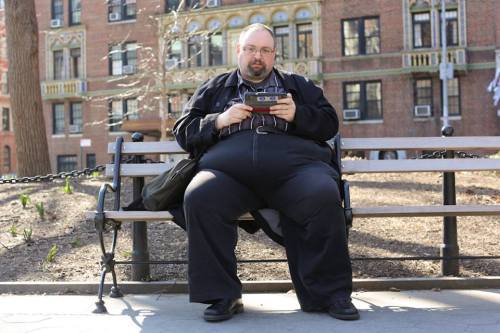
"There’s a principle in game theory known as min-maxing, meaning that in any given system, behaviors will evolve that maximize gain for minimum effort. This means that a lot of thought has to be put in to bulletproofing a new system against min-maxing. Take the internet, for example. The designers of the internet thought it was going to be this wonderful open community. They were expecting it to be nothing but unicorns shitting rainbows. But in come the min-maxers with their spam, bot nets, and viruses."
“It’s time to call it what it is”

I didn’t buy tickets for the play, Nirbhaya. I avoided it until the weekend it was playing, and then found that it was sold out.
But like a song that contours one’s first memories, it fell into my lap. Like a terrifying blessing.
I had two tickets waiting for me at the counter, and the perfect friend to bring with me. You don’t turn down a gift like that.
So I showed up.
***
The play is infused with a love for Delhi — an irrational, despite-it-all affection for Chandni Chowk, jugaad, and the aesthetic wire-mesh jumble that forms the ceiling of the Old City.
It is a love I have scarcely understood.
(If you’d told me a year ago that I’d be living here I’d have laughed at you.)
Ever since I can recall, Delhi has been a place for nightmares.
The city where people clap and egg each other on to harass a woman. The city where the police hushes you when you protest sexual violence. The city of gang-rapes, where if you are walking alone in the dark, strange men will pull up in a car beside you, grab you by the legs, assault you for hours until you turn up either dead or almost-dead.
Even my frequent overnight stopovers on my way to the Himalayas saw my backpack bobbing only so deep, only so far. Delhi has always been ultimately inaccessible, finally hostile — even on its most uneventful days. When a story is told too many times, it becomes truth.
But do you turn down your dream job to escape the possibility of living in the city of nightmares?
Many do, and those who arrive dream of returning.
***
The story is so familiar now. On the night of the 16th December, 2012, a 23 year old student was attempting to return home after having watched a film with her friend.
After struggling to find an auto back to Dwarka from Saket, the duo ended up in Munirka, where they boarded a bus.
The details have been repeated so many times, I am afraid that they’ve already become ineffective at eliciting the response they first did.
The argument on the bus. The beating of the male friend. The gang-rape of the student, who struggled and fought back so hard that she enraged her attackers further. They raped her with an L-shaped iron rod, ripping out most of her intestines. After they were done raping her they threw the couple out, tried to run her over. And 13 days later, the attempted murder became a reality.
I still remember the day she died. My mother and I sat, desperately quiet, at the breakfast table. The radio played in front of us. We were stunned into silence while the story repeated itself.
The men were on a joyride. She was out late at night with a male friend. They had watched Life of Pi. She was from a working class family. Upward social mobility. Alcohol, poverty, and Delhi — the city of nightmares. Brutal assault. A will to survive. Guts that were literally wrenched.
All kinds of opinions – Hang the bastards! Castrate them! Cut their balls off! How could she be out that late with a man? If she were my daughter I’d kill her right then. She should have chanted the Saraswati mantra and tied a rakhi on their wrists. Youngsters are eating too much chowmein and must have their mobile phones taken away from them.
Shudder. Cluck, cluck, cluck. She’s better off dead. Who will marry her now?
What happened to her? What exactly did they do to her? And then? What did they do next?
I wonder if the journalists who reported this story in those ferocious weeks felt this unclean while they danced the too-familiar dance of recreating the night of December 16th.
***
The weeping begins almost immediately. At some point my friend discreetly places tissues at my elbow. Soon after, her palm holds mine, our intertwined hands tucked into my lap.
I would not be in Delhi but for Nirbhaya.
Things have never been the same after 16th December.
How to explain that everything that’s happened in my life since then has been created in the aftershocks of this utterly fucked up set of circumstances?
I was 23. She was 23.
Now I am 24 and she’s still 23.
I took to the streets as part of the multitudes. The initial meetings against the death penalty and against rape culture at Jadavpur University felt urgent, yet remained frustratingly fringe.
Then we had word that people in Delhi and Bombay would ‘take back the night’ on New Year’s eve, and hence, so did Calcutta.
Take Back the Night became a series of monthly gatherings that snowballed quietly into firm alliances and warm friendships with trans* and queer comrades; kin of all ages, many backgrounds.
There is a constant awe of the veterans of the women’s movement in West Bengal, who were pushed brutally into police vans for the unspeakable crime of peacefully protesting the gang-rape and murder of the college student in Kamduni. Spending the day in jail with them remains a source of great rage and deep irony.
Most of the day was spent in lock-up, ‘guarded’ by mere girls who, on gentle probing, agreed with us but remained defensively loyal to their jobs. As the media waited outside, the Commissioner of Police called a press conference condemning us as Maoists. Of course.
Meanwhile, the men who groped me and made disgusting noises at me and expressed the desire to fuck me with their fingers will never ever see the inside of a prison cell.
The year since she died passed in more or less surreal ways.
As a friend called to say the BBC radio wanted to talk about the sexual violence in Calcutta, and on my way to the University a gaggle of school boys leered and called me a whore devotee of Maa Kali. The BBC may want to talk to me, but I’ll never stop being dirty.
(Whore. Slut. Bitch. Cunt. Maagi. Rand. Veshya. The words came from the school boys and the old men, some from Pappa and some from lovers. Which came from which? Does it matter?)
And the dream job was created out of this tragic tipping point. There was a Nirbhaya-shaped possibility in Delhi, and one was summoned to support the big and deep ways in which some amazing people intended to respond to it.
So — Delhi. Shit.
***
The play takes me back again and again to heavy bird that nested in my heart when I first arrived in this city.
Being in the proximity of Munirka was unimaginable hell, the tasks ahead a challenge that sometimes seemed so utterly impossible.
Was the rupture that she left behind big enough for light to peek through?
Would what sisters-in-arms had been saying for over forty years permeate into a culture with widespread participation?
***
All these stories are about silence.
Poorna’s, Priyanka’s, Sapna’s, Sneha’s.
And they’re ultimately about breaking the silence.
About coming face to face with the chatter inside one’s head. About filling up the space between the fingers and the pulsating cursor.
***
So shall I break mine?
(A long, meandering road. Very few companions now, I’m sure. Will they read?
What shall I tell them? Which time?
They’re least likely to blame the 10 year old in the hands of the 75 year old.
They won’t be able to lecherously imagine the sometimes nightly beatings — will they?
What of the everyday, the almost mundane? An elbow in the breast.
What of the darkness that swallows you whole, so that you spend 21, 22, 23, 24 years figuring out what a normal person acts like?
What if every single situation isn’t a life-threatening emergency? What if the beating hands have stilled — the stinging words caught in the throat? What if I don’t have to please anyone?)
***
Shreya. Daughter of Ila. Survivor of domestic violence, childhood sexual abuse, street sexual harassment and rape.
I’ll tell you the one you’ll blame me the most for.
I present this to you, men’s rights activists. That photographer who once found my blog and flooded Twitter with his disgust of feminists like me. To you, that feminist who doesn’t think I do feminism correctly. Take this, those of you who will jerk off to this information I’ll lay wide open to you.
Here, gatekeepers of morality, toers-of-the-line and those who want to beat the ones who don’t toe it. I give you this, religious fundamentalists. And you too, all the misogynists who showed up at the Delhi protests with the intention of picking up “chicks”. Come at me, the ugliest contortions my mind is capable of making to terrify and torture.
He was not a stranger that leapt out of a bush. He was not a bus driver with an iron rod. He was a friend. I spent time with him willingly. Even though he’d tried to kiss me before, and I’d stopped him. Even though I didn’t want to be with him. He had been left by his partner, and he was desperately depressed. He told me he was suicidal, and worry won over reluctance. Yes, I went with him to spend the night in the same house, until he could be taken to the doctor in the morning. Does that mean that I asked for it?
He wouldn’t stop. I was dry and he hurt me deeply. I felt numb and then I felt betrayed, and then I felt murderously angry. It didn’t end in a court case or even a police report. He didn’t look suicidal when I realised he wouldn’t stop and begged him to at least use a condom. His white teeth glinted in the dark as he finally nailed that tight little _________ who wouldn’t.
It was rape.
*


